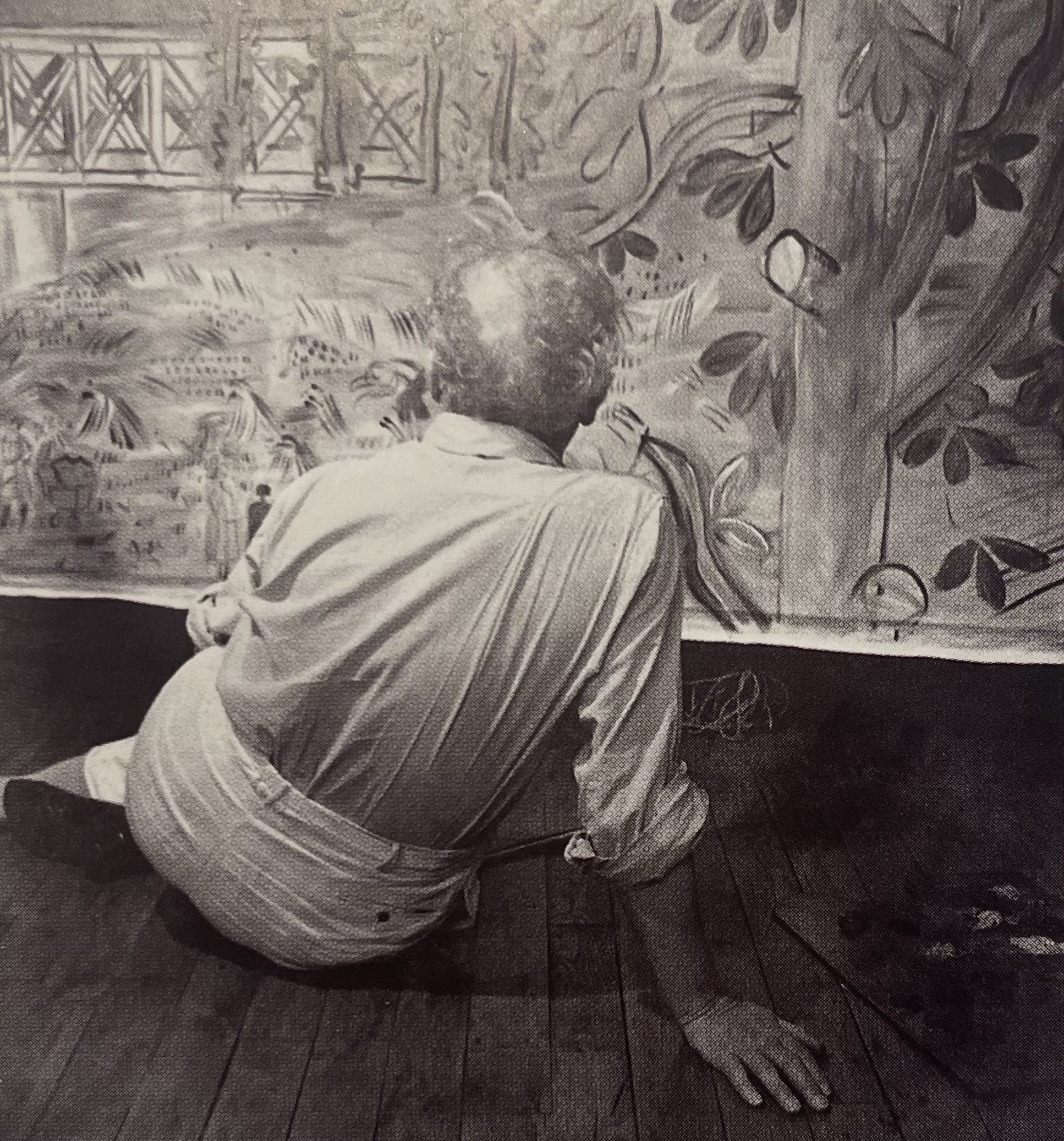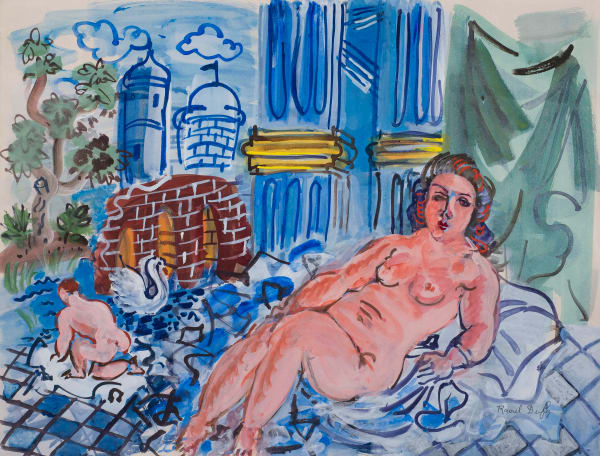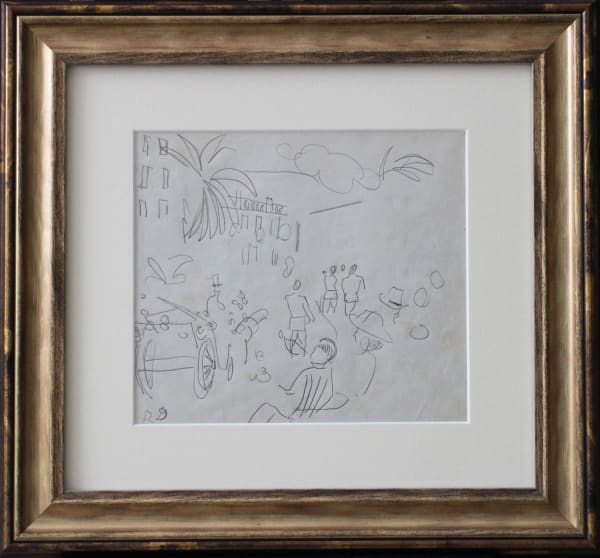-

-
-
Dufy’s vibrant brushwork, vivid colour palette and precocious talent ensured his success. Alongside his fauve contemporaries, Henri Matisse, André Derain and Braque, he forged a revolution in the use of colour, breaking from the strictures of the Paris Salon. The Salon deemed what was considered acceptable in fine art and favoured the classical, a sentiment that Dufy rejected in his embrace of innovative pictorial structures and expressive line. Dufy’s practice was radical in that he treated colour separately from subject matter, abandoned perspective and embraced decoration.
Emerging from the destruction of the First World War, Dufy’s work offered a sense of optimism and relief to a society that had undergone so much trauma. His paintings focus upon life’s pleasures, a subject that over the years artists have tended to shy away from. It raises questions as to why introspection is now often held in higher regard than conviviality, particularly when much of today’s media is based on aspirational imagery.
-
-
-
 Raoul Dufy, Le Repas des chasseurs, 1936
Raoul Dufy, Le Repas des chasseurs, 1936 -
 Raoul DufyLe Château de Chambord, 1934Watercolour and gouache on paper18 7/8 x 25 1/4 in, 48 x 64 cmSigned, dated, and dedicated ‘à mon vieux Gir’ lower edgeSold
Raoul DufyLe Château de Chambord, 1934Watercolour and gouache on paper18 7/8 x 25 1/4 in, 48 x 64 cmSigned, dated, and dedicated ‘à mon vieux Gir’ lower edgeSold -
 Raoul Dufy, Scène de dépicage, le repas, c.1946
Raoul Dufy, Scène de dépicage, le repas, c.1946 -
 Raoul DufyHommage à Claude Lorrain, c.1926Watercolour on paper19 3/4 x 25 5/8 in, 50 x 65 cmSigned 'Raoul Dufy' lower leftSold
Raoul DufyHommage à Claude Lorrain, c.1926Watercolour on paper19 3/4 x 25 5/8 in, 50 x 65 cmSigned 'Raoul Dufy' lower leftSold
-
-
 Cirque Fernando poster printed by Charles Lévy (Paris), 1890, Carnavalet Museum, Paris
Cirque Fernando poster printed by Charles Lévy (Paris), 1890, Carnavalet Museum, Paris -
-
 Raoul DufyCarnaval à Nice, le défilé, c. 1934Pencil on paper18 x 20.4 cm, 7 3/32 x 8 1/32 inStamped 'RD' lower leftSold
Raoul DufyCarnaval à Nice, le défilé, c. 1934Pencil on paper18 x 20.4 cm, 7 3/32 x 8 1/32 inStamped 'RD' lower leftSold -
 Raoul DufyBataille de fleurs à Nice à la calèche, c. 1934Pencil on paper15 x 20.4 cm, 5 29/32 x 8 1/32 inStamped 'RD' lower rightSold
Raoul DufyBataille de fleurs à Nice à la calèche, c. 1934Pencil on paper15 x 20.4 cm, 5 29/32 x 8 1/32 inStamped 'RD' lower rightSold -
 Raoul DufyCarnaval à Nice, la parade, c. 1934Pencil on paper18 x 20.4 cm, 7 3/32 x 8 1/32 inStamped 'RD' lower leftSold
Raoul DufyCarnaval à Nice, la parade, c. 1934Pencil on paper18 x 20.4 cm, 7 3/32 x 8 1/32 inStamped 'RD' lower leftSold
-
-
 Dufy sits on the floor, painting a decorative panel for the bar of the Palais de Chaillot: L'Oise, la Seine, la Marne
Dufy sits on the floor, painting a decorative panel for the bar of the Palais de Chaillot: L'Oise, la Seine, la Marne















